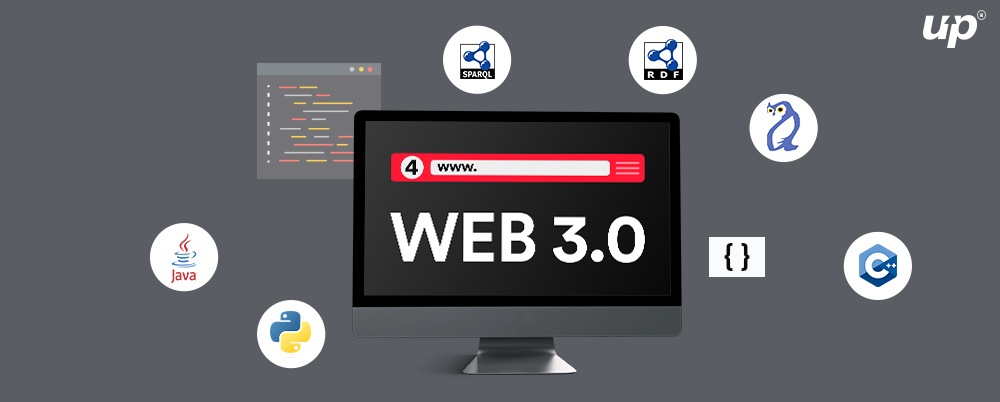Web3 refers to the third generation of the World Wide Web, which aims to provide a decentralized, open-source platform for the internet. In the context of payment systems, web3 technologies have the potential to revolutionize the way payments are made by enabling peer-to-peer transactions without the need for intermediaries.
Some of the ways that web3 revolutionizing payment systems include:
Crypto currencies: Web3 technologies enable the use of cryptocurrencies, which are decentralized digital assets that can be used as a medium of exchange. Cryptocurrencies offer fast, secure, and low-cost transactions, and can be used to make payments anywhere in the world.
Smart contracts: Web3 technologies enable the use of smart contracts, which are self-executing contracts with the terms of the agreement written into lines of code. Smart contracts can be used to automate the payment process, making it faster and more efficient.
Decentralized finance: Web3 technologies are enabling the development of decentralized finance (DeFi) platforms, which allow users to access financial services without the need for traditional financial intermediaries. DeFi platforms use smart contracts and cryptocurrencies to enable peer-to-peer transactions and offer a wide range of financial services, including lending, borrowing, and trading.
web3 technologies have the potential to greatly improve the efficiency and accessibility of Payment app development systems by enabling decentralized, peer-to-peer transactions and automating the payment process through the use of smart contracts.
What is Web3.0 in banking?
Web3.0 is a term used to refer to the next generation of the World Wide Web, which is focused on the integration of semantic technologies and intelligent agents. The “Semantic Web” and “Web of Meaning” are other names for it.
In the context of banking, Web3.0 technologies could potentially be used to create more intelligent and personalized banking services, by using semantic data and machine learning algorithms to understand customer needs and preferences. For example, a bank could use Web3.0 technologies to create a chatbot that is able to understand the meaning of a customer’s questions and provide relevant and accurate responses, or to Payment app development a personal financial management tool that is able to analyze a customer’s spending patterns and make recommendations for how to save money or pay off debt. However, it is important to note that Web3.0 is still an emerging area of technology, and it is not yet clear how it will be used in the banking industry.
What language will Web3 use?

Web3.0 technologies are based on a combination of semantic technologies and artificial intelligence, which can be implemented using a variety of programming languages. Some of the languages that are commonly used for Web3.0 development include:
RDF (Resource Description Framework): This is a standard for representing data on the Web, which is often used to represent the semantics of Web3.0 applications.
OWL (Web Ontology Language): This is a language for representing the meaning of concepts and relationships in a domain, which is often used to create ontologies for Web3.0 applications.
SPARQL: This is a query language for RDF data, which is often used to retrieve and manipulate data in Web3.0 applications.
Python: This is a popular programming language that is often used for artificial intelligence and machine learning tasks, and is therefore frequently used in Web3.0 applications.
Java: This is another popular programming language that is often used for Web development, and is therefore sometimes used in Web3.0 applications.
C++: This is a high-performance programming language that is sometimes used in Web3.0 applications that require a lot of processing power, such as those that use machine learning algorithms.
It is worth noting that Web3.0 technologies are still an emerging area, and the languages that are used for development may evolve over time as new technologies and approaches are developed.
Who is funding Web3?
Web3.0 technologies are being developed and funded by a variety of organizations, including private companies, academic institutions, and government agencies. Some examples of organizations that are involved in Web3.0 research and development include:
Google: Google is a technology company that is actively involved in Web3.0 research, and has developed a number of tools and technologies related to the Semantic Web.
IBM: IBM is a technology company that has been involved in Web3.0 research for many years, and has developed a number of products and services related to semantic technologies.
MIT: The Massachusetts Institute of Technology (MIT) is a leading academic institution that has conducted significant research on Web3.0 technologies, and has developed a number of tools and technologies related to the Semantic Web.
European Union: The European Union has funded a number of Web3.0 research projects through its Horizon 2020 research and innovation program, with the aim of developing technologies that can make the Web more intelligent and user-friendly.
National Science Foundation (NSF): The National Science Foundation is a USA government organization that provides funding for scientific study and has previously provided assistance for a number of Web3.0 research initiatives.
It is worth noting that Web3.0 technologies are still an emerging area and the organizations that are funding and developing these technologies may change over time as the field evolves.
How Web3 is shaping the future of finance?

Web3.0 technologies have the potential to shape the future of finance in a number of ways. Some of the ways that Web3.0 could potentially impact the financial industry include:
Personalized financial services: Web3.0 technologies could be used to create more personalized financial services, by using semantic data and machine learning algorithms to understand customer needs and preferences. This could allow financial institutions to offer customized products and services that are more relevant to individual customers.
Improved risk assessment: Web3.0 technologies could potentially be used to improve risk assessment in the financial industry, by using data and machine learning algorithms to better understand and predict risk. This could help financial institutions to make more informed decisions and reduce the risk of losses.
Increased automation: Web3.0 technologies could also be used to automate certain financial processes, such as trading and investment management. This could potentially reduce the need for human intervention and improve the efficiency of financial operations.
Enhanced customer experience: Web3.0 technologies could also be used to improve the customer experience in the financial industry, by creating more intelligent and personalized customer service tools. For example, a chatbot that is able to understand the meaning of customer inquiries and provide relevant and accurate responses could potentially improve the customer experience.
It is important to note that Web3.0 is still an emerging area of technology, and it is not yet clear how it will ultimately impact the financial industry. However, these are some of the ways in which Web3.0 technologies could potentially shape the future of finance.
Is Web3 only crypto?
Web3.0 technologies are not limited to the use of cryptocurrencies. While cryptocurrencies and blockchain technologies are often associated with Web3.0, they are just one aspect of this broader field.
Web3.0 technologies are focused on the integration of semantic technologies and intelligent agents, with the aim of making the World Wide Web more intelligent and easier to use. These technologies can be applied to a wide range of areas, including finance, healthcare, education, and many others.
Cryptocurrencies and blockchain technologies are just one area in which Web3.0 technologies could potentially be applied. They could potentially be used to create more efficient and secure financial systems, by allowing for decentralized and transparent transactions. However, Web3.0 technologies have many other potential applications as well, and are not limited to the use of cryptocurrencies.
How do Web3 companies make money?

There are several ways that Web3 companies can generate revenue:
Transaction fees: Many Web3 companies, such as crypto currency exchanges, charge fees for processing transactions. These fees can be a percentage of the transaction value, or a flat fee.
Subscription fees: Web3 companies may charge a recurring fee for access to their products or services. For example, a company that provides a decentralized cloud storage platform might charge a monthly subscription fee to use the service.
Advertising: Web3 companies may generate revenue by displaying advertisements on their platforms or products.
Partnerships and sponsorships: Web3 companies may partner with other companies or organizations to promote their products or services, and may receive financial compensation in return.
Selling products or services: Web3 companies may sell products or services directly to customers. For example, a company that provides a decentralized marketplace platform might charge a fee for listing items for sale on the platform. The specific revenue model for a Web3 company will depend on the nature of its products and services, and the target market it is seeking to serve.
How Web3 will change the world?
Web3 technologies, such as block chain and decentralized applications (DApps), have the potential to revolutionize a wide range of industries and change the way that people interact with each other and with technology. Some potential impacts of Web3 include:
Increased security and privacy: Web3 technologies can enable more secure and private online interactions by eliminating the need for central intermediaries and using cryptographic techniques to protect data.
Greater transparency and accountability: Web3 technologies can create more transparent and accountable systems by enabling the creation of tamper-evident records and providing a verifiable history of transactions.
Improved efficiency: Web3 technologies can streamline processes and reduce the need for manual intervention, leading to increased efficiency and cost savings.
Enhanced user control: Web3 technologies can give users greater control over their personal data and online interactions, enabling them to make more informed decisions about how their information is used.
New business models: Web3 technologies can enable the creation of new types of businesses and revenue models, such as decentralized autonomous organizations (DAOs) and token-based systems.
Final Thought
Web3 technologies, such as block chain, can enable native payment functionality by providing a secure and decentralized platform for storing and transferring value. One of the key benefits of Web3 payments is that they can be made directly between two parties, without the need for a central intermediary. This can enable faster, cheaper, and more secure transactions, as there is no need to trust a third party to handle the payment.
Web3 revolutionizing payment can be made using a variety of different assets, including crypto currencies, digital tokens, and even traditional fiat currencies. They can also be integrated into a variety of different platforms and applications, including online marketplaces, e-commerce websites, and mobile apps. Web3 has the potential to revolutionize the way that payments are made and processed, by providing a more efficient and secure alternative to traditional payment systems.











